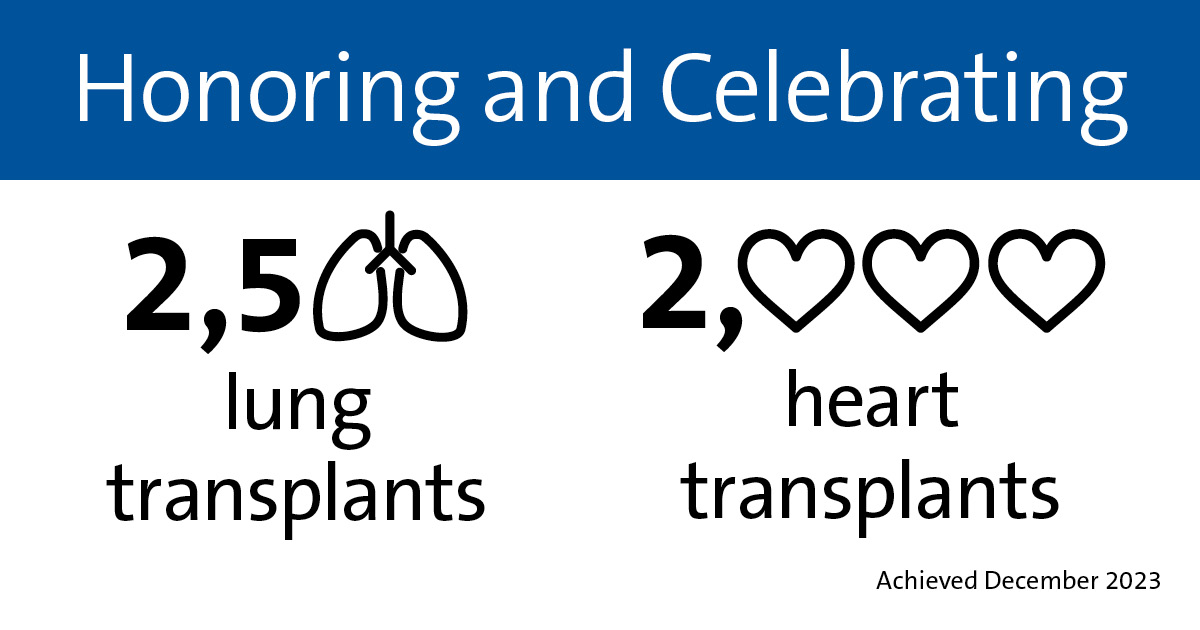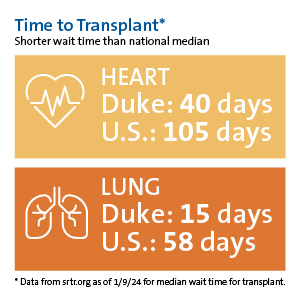Duke’s cardiothoracic program is recognized as a national leader in volumes of heart and lung transplants performed. The team’s surgeons say this high-volume caseload gives them the experience to handle the most complex cases.
“We’ve built a system that can accommodate higher-risk patients and be successful with the most complex cases,” says Jacob Schroder, MD, surgical director of the heart transplant program. “Our unique expertise includes all of the people and resources involved, from our preop evaluation to the OR team to the ICU to perfusionists.”

To facilitate a solid organ transplant evaluation for your patient, please refer to our transplant referral forms.
The heart transplant program at Duke performed 161 surgeries in 2023, the most in the nation and the most annual in the program’s history. Meanwhile, Duke surgeons have led the nation in lung transplants since the founding of the lung transplant program in 1992.
Schroder adds that this expertise allows Duke to accept patients that other centers won’t.
“There are a number of reasons why other centers turn down patients and don’t want to risk a poor outcome,” he says. Duke often accepts patients who are older, are at higher risk, and have difficult-to-match antibodies. In addition, patients who need multiple organ transplant can find a home at Duke, a leading institution in heart-lung transplant.
“The subset of patients who have end-stage organ disease involving both their heart and lung have historically been underserved by the transplant community,” says Matthew Hartwig, MD, surgical director of the lung transplant program. “These procedures are still relatively rare, but we believe this is an important option that our center should offer. Transplant centers must be able to provide experienced teams for both heart and lung procedures. Few centers can offer this high level of expertise.”
Notably, the program has cut wait times for organs. Duke patients wait an average of about two weeks for a lung, compared with the national average of four to six months, says Hartwig. Duke’s heart transplant median wait time is 40 days , as compared to 71 days in Organ Procurement and Transplantation Network region 11 and 105 days nationally. Shorter wait times are a result of multiple strategies, including safely using organs from greater distances and organs that other centers might turn down.

“When someone is on our wait list, our job is to cast the net as far and wide as possible and get them transplanted successfully as quickly as possible,” Schroder says. “We have learned that a lot of hearts that are not used are fine. Not everybody needs a perfect heart from a 25-year-old. There are donors in their 60s whose hearts can be used with good, long-term outcomes.” As the first center in the country to successfully use hearts donated after circulatory death, Duke has consistently innovated to expand donor populations.
“One of the best aspects of Duke is the people who work here,” Hartwig says. “No matter how challenging the medical problems may be, there’s a world-class expert a phone call away who can help intervene.”
Duke programs continue to set milestones in patient care. In 2023, the cardiothoracic program surpassed 2,500 total lung transplants and 2,000 total heart transplants since each began.
